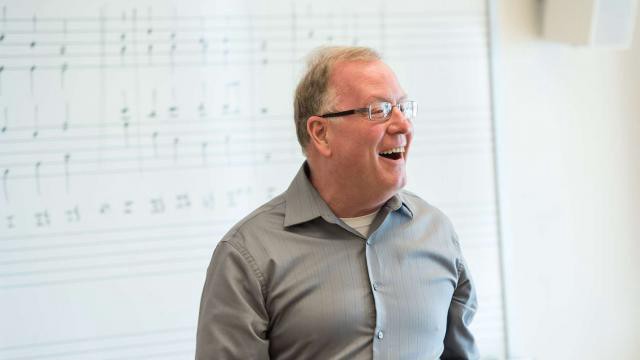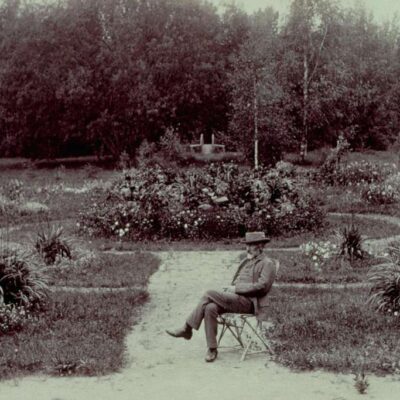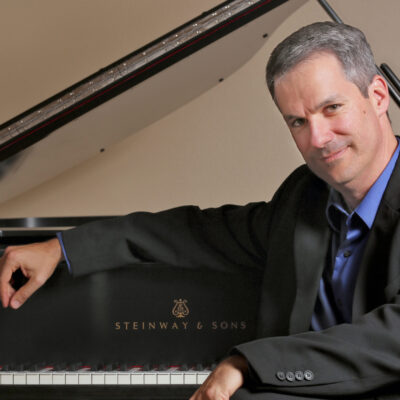
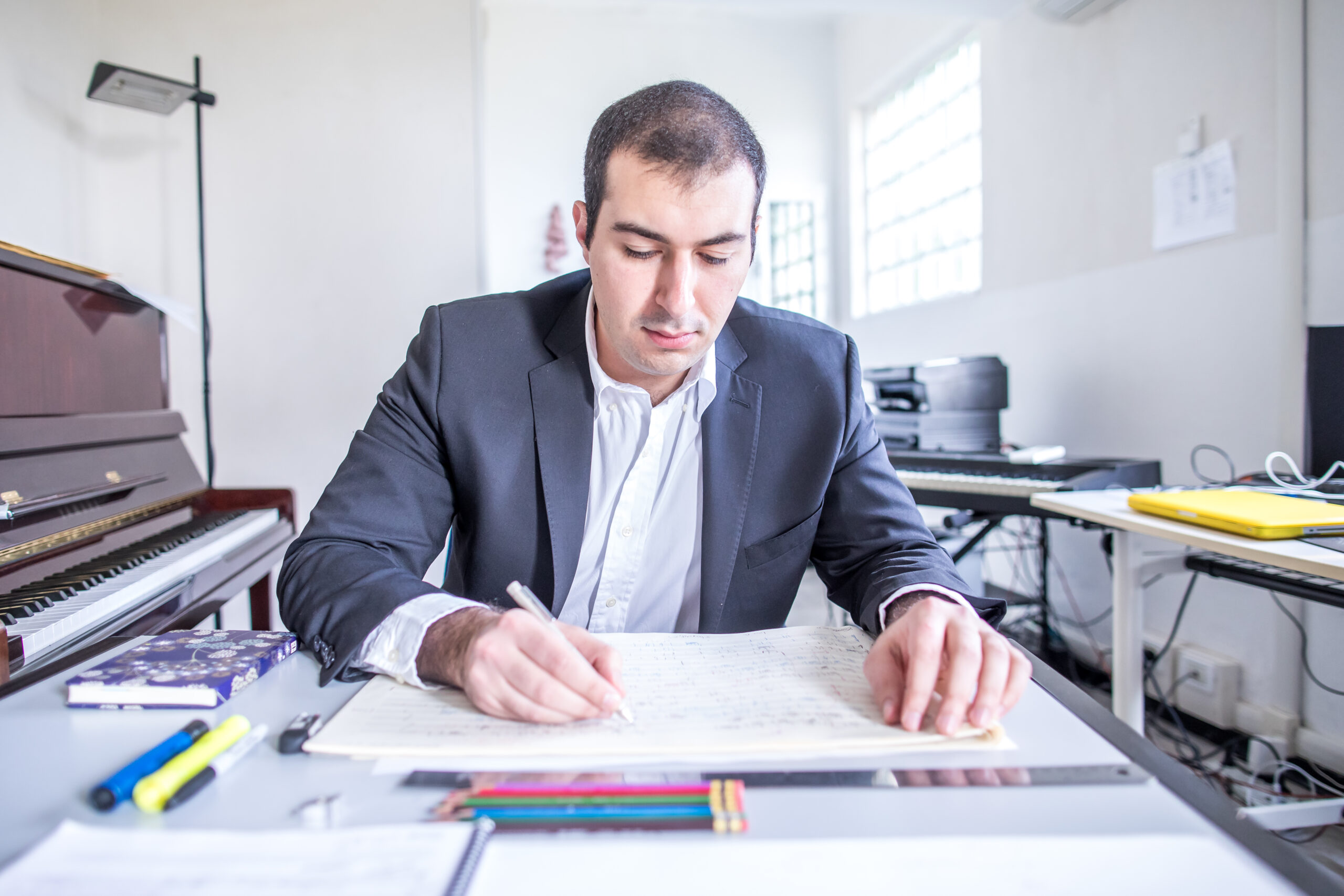
Saad Haddad (b. 1992)
Fantasia for Strings (2025)
It all starts with 16th century composer Thomas Tallis, who spent his career in the service of English monarchs Henry VIII, Edward VI, Mary I, and Elizabeth I. Within his vast catalog is a 1567 tune “Why turn’th in sight” that caught the attention of composer Ralph Vaughan Williams while he was editing the English Hymnal in 1906. Vaughan Williams used Tallis’s tune as the basis of a fantasia for string orchestra and string quartet, which was premiered in Gloucester Cathedral in 1910 and quickly became one of the most beloved orchestral works of the 20th century. The Fantasia on a Theme by Thomas Tallis treats its materials ‘antiphonally’ – i.e., by passing them back and forth between the string orchestra and string quartet, rather like musical badminton.
Jump to 2025 and California Symphony’s resident composer Saad Haddad, whose work aims at a détente between Arab and European musical styles. “The general idea for this piece is that I took a snapshot of Ralph Vaughan Williams’ Fantasia on a Theme by Thomas Tallis which has a very similar instrumentation, and I created an entire soundscape in my own aesthetic based on his,” explains Haddad. “The role of the solo string quartet is to evoke the Vaughan Williams theme within the framework of the Arab maqam system, while the rest of the orchestra plays in an aesthetic closer to the original Vaughan Williams. So there is an internal dialogue going on between the two groups.”
But that’s just the beginning. Fusion happens gradually. The two groups trade back and forth until they both merge together and the two styles—Arab and European—sound as one, at which point Haddad hopes “that by that time, we are prepared as listeners to go through that experience.”
“It’s quite a puzzle to work on,” says Haddad. “But that’s why I’m here!”
Grȧzyna Bacewicz (1909–1969)
Piano Concerto (1949)
Among the happier journeys of recent years has been our collective rediscovery of a bevy of composers whose work was going unheralded. We’re bringing them back, publishing and performing and recording them. We’re all making new friends.
Which takes us to Grȧzyna Bacewicz, an exceptionally talented triple-threat violinist, pianist, and composer. Her long-overlooked music is well worth exploring: beautifully crafted, vital and passionate, it carves out a stylistic journey from the Gallic influences of her youth to the dark complexities of her late years.
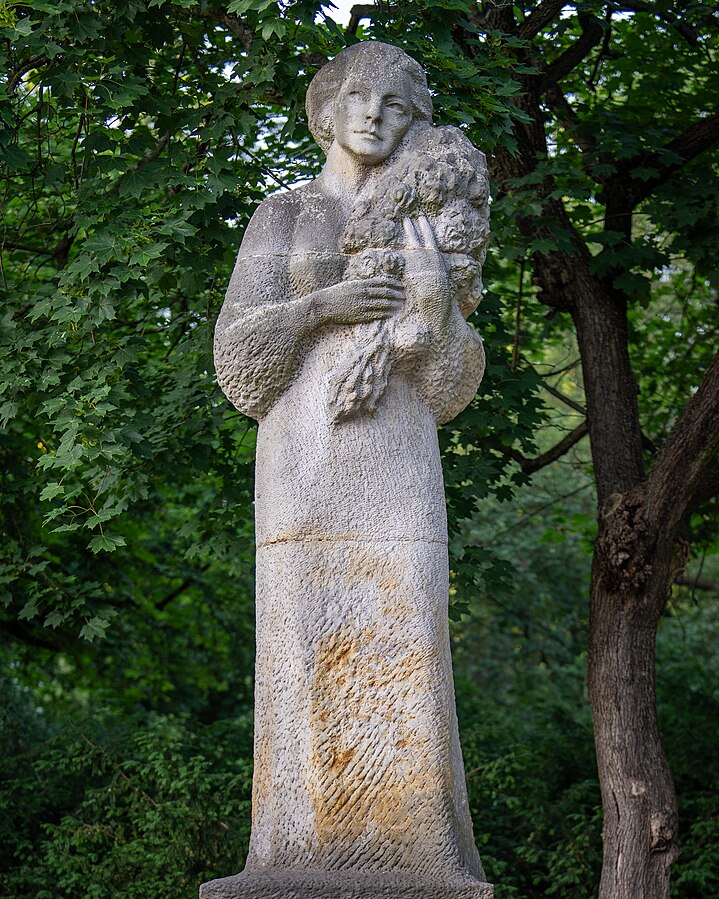
Bacewicz’s Piano Concerto of 1949 provides a near-ideal entry point. Poised between her middle and later years, it illustrates the Stravinsky-influenced ‘neoclassicist’ style of her years in Nadia Boulanger’s composition studio, while also savoring of her fascination with Polish folk music. Thus the first movement sparkles, glistens, and thrums; one might be reminded of Prokofiev, or perhaps Czech composer Bohuslav Martinů.
The second movement is a different kettle of fish. It is based on the ancient Polish wedding song Oj Chmielu, a surprisingly mournful melody for such a joyous event. Bacewicz takes the lovely tune through a series of striking variations, piano and orchestra threaded together in a close partnership.
The third movement begins with snare drums before setting off on a rhythmically energized journey that evokes the vitality of country dance, alternating with passages of exquisite lyricism and tender introversion.
Pyotr Ilyich Tchaikovsky (1840–1893)
Symphony No. 6 in B Minor, Op. 74 “Pathétique” (1893)
Reading fanciful scenarios into musical compositions is a favorite pastime of listeners and commentators alike, and when the piece has a backstory like the Tchaikovsky Pathétique, the urge to wax screenwriter becomes well-nigh irresistible. Just the title alone is enough to fan the flames of invention, not to mention Tchaikovsky’s death a mere nine days after the work’s premiere. Because both nature and music commentators abhor a vacuum, Pathétique plotlines have been conjured up throughout the work’s century-plus history: suicide note, presentiment of death, death wish, despair of being homosexual in a violently anti-gay culture.
The facts point in a more prosaic direction. Tchaikovsky was in fine mental and physical fettle at the time he wrote the symphony. He was enthusiastic about it, as witnessed by a letter to his brother Modest: “I am now wholly occupied with the new work … and it is hard for me to tear myself away from it. I believe it comes into being as the best of my works.”
Nor is the Pathétique all that tragic, for that matter. It just seems that way because Tchaikovsky flipped the order of the third and fourth movements and ended the symphony with its slow movement. As a result, the third movement ends with a roof-shaking wallop while the symphony as a whole concludes with a sustained sigh of regret.
The ghostly bassoon solo that arises from the depths of the opening is in fact the primary theme of the first movement, but that isn’t apparent until the tempo quickens. The secondary theme—traditionally posited as the yan to the primary theme’s yin—stands tall amongst Tchaikovsky’s most heartfelt melodies.
Tchaikovsky ranks amongst the very finest of waltz composers—he’s Russia’s answer to Johann Strauss, Jr.—and he brings his inspired sense of the dance to the second movement. It’s not your everyday waltz, being in quintuple meter (5 beats to the bar) instead of the usual triple. (The listener may contemplate how one might have gone about dancing such a waltz.) Elegance gives way to sizzle for the third movement, a dynamite march filled with fire, thunder, and some of the burliest timpani passagework in the symphonic literature.
The third movement ends with a glorious bang. The finale opens with a shattering wail of grief. A dark labyrinth of music gapes open, haunting and unsettling. The mood never lifts, but at long last the opening melody returns. A few soft strokes of the tam-tam and a long fade-out into veiled obscurity act not so much to end the symphony as to observe its demise.
The Pathétique may be Tchaikovsky’s epitaph by accident only, but it serves the role admirably. “I certainly regard it as easily the best—and especially the most ‘sincere’—of all my works,” Tchaikovsky wrote his nephew Vladimir ‘Bob’ Davydov, “and I love it as I have never before loved one of my musical offspring.”
Program Annotator Scott Foglesong is the Chair of Musicianship and Music Theory at the San Francisco Conservatory of Music, and a Contributing Writer and Lecturer for the San Francisco Symphony. He also leads the California Symphony’s ground-breaking music education course for adults Fresh Look: The Symphony Exposed.
The 24-25 CROWNING ACHIEVEMENTS Season continues with TCHAIKOVSKY PASSION, on Saturday, March 22 at 7:30 p.m. and Sunday, March 23 at 4 p.m. at the Lesher Center for the Arts in Walnut Creek. Single tickets start at $50 and at $25 for students 25 and under, and include a free 30-minute pre-concert talk starting one hour before the performance. Buy tickets online or call or visit the Lesher Center Ticket Office at 925.943.7469, Wed – Sun, 12:00 noon to 6:00 p.m.

